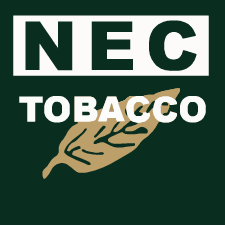About us

The National Employment Council for the Tobacco Industry (NEC Tobacco) is registered with the Registrar of Labour, it seeks to regulate, in accordance with the provisions of the Labour Act 28:01, matters of mutual interest to members and promote harmonious industrial relations. Executive Members of NEC ensure that the council fully complies with Labour Act requirements that include producing audited financial statements and carrying out inspections within the Tobacco Industry. Of great significance is NEC Tobacco’s responsibility of overseeing Collective Bargaining Agreements that form the basis of minimum working conditions within the Tobacco Industry. The parties who have agreed to the establishment of the Council are:
- The Tobacco (Miscellaneous) Industry Employers’ Association
- The Cigarette and Tobacco Manufacturing Industry Employers’ Association
- The Tobacco Graders Employers Association
- The Zimbabwe Tobacco Industrial Workers’ Union
Executive Committee
Sectors
Tobacco Miscellaneous Sector
The Miscellaneous Sector of the Tobacco Industry is the one in which employers and employees are associated together for the purpose of selling by auction, buying, packing and exporting unmanufactured tobacco, and the processing and handling incidental thereto.
Read More...
From a historical point of view, tobacco was introduced into the Sub-Saharan region by Portuguese explorers and Arab slave traders. Before European settlers came into Zimbabwe it is known that indigenous people grew tobacco (Nyoka Tobacco).The first claim to successfully grow flue-cured tobacco was made in 1894 in Mutare.
In 1910, the first auction sales took place in Zimbabwe but was later abandoned in 1914 due to lack of competition between buyers and over production. From then on, the crop was sold through various methods including sales by private treaty and co-operative selling, where growers were contracted to sell their crops to the Tobacco Co-operative Society.
The Tobacco Marketing and Levy Act governing the Tobacco Industry was promulgated in 1936. This Act provided for the formation of the Tobacco Marketing Board (now the Tobacco Industry and Marketing Board) and the compulsory selling of tobacco through the Auction floors.The Tobacco Marketing and Levy (Amendment) Act, 1997 facilitated the change of name from Tobacco Marketing Board to the Tobacco Industry and Marketing Board (TIMB) and subsequent renaming of the Act as the Tobacco Industry and Marketing Act [Chapter 18:20].
Cigarette & Tobacco Manufacturing Sector
Cigarette manufacturing involves cut rag processing, cigarette rolling and product packing. Cut rag manufacturing is a process that converts tobacco leaves that arrive in 200 kg cases into batches of cut rag that is ready to be made into cigarettes.
Read More...
When processed tobacco leaf arrives at a factory, it is carefully blended with other ingredients that the brand recipe may call for, such as flavouring or expanded tobacco.
The blended tobacco is treated with just the right amount of steam and water to make it supple and is then cut into the form used in cigarettes. Excess moisture is then removed so the cut rag can be given a final blending and quality check.
Modern and high-speed machines are used to produce filters, cigarettes and pack them into packets, (cartons and ‘shippers cardboard boxes). The technology has advanced significantly over the years.
Grading Sector
Read More...
Graders in grading the tobacco leaf take into consideration leaf size and shape, degree of damage, maturity and surface texture of the leaf.
Techniques used by graders to correctly grade tobacco include keeping reapings from different fields separately; varieties of tobacco separate from each other and separating tobacco cured in different curing systems and conditions.
Tobacco merchants value and price tobacco based on the factors above through a similar process known as classification. Classification of tobacco was introduced by the then Tobacco Marketing Board in 1946, the Board sought to standardize grading systems used within the Tobacco Industry.
The standard grading system has been found to be a useful tool in comparing more closely the grade composition and price structure of the Zimbabwean tobacco crop with that of competing countries such as USA, Malawi, India and many others.
Empowering Tobacco Workers and Employers
Join us in shaping the future of the tobacco sector in Zimbabwe!
Your participation is crucial in our collective bargaining efforts. Together, we can ensure fair and sustainable practices for all stakeholders. Contact us today to learn more and get involved.





![[removal.ai]_02fc0441-bb80-46cb-9078-22668b43e924-img-20240826-wa0006 [removal.ai]_02fc0441-bb80-46cb-9078-22668b43e924-img-20240826-wa0006](https://nectobacco.co.zw/wp-content/uploads/sites/22/elementor/thumbs/removal.ai_02fc0441-bb80-46cb-9078-22668b43e924-img-20240826-wa0006-qtadt1cs4cryrxzxj88vi2lff5r6ipn8psd94hkq1u.png)